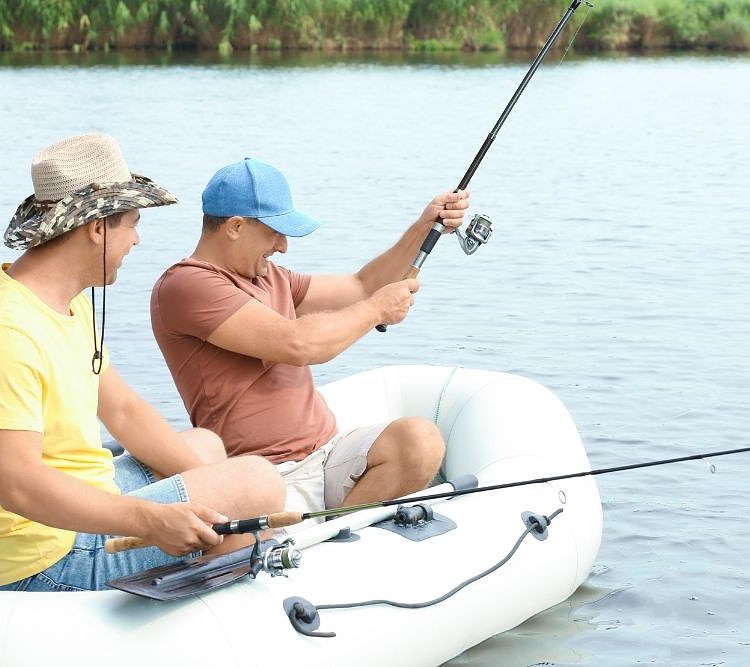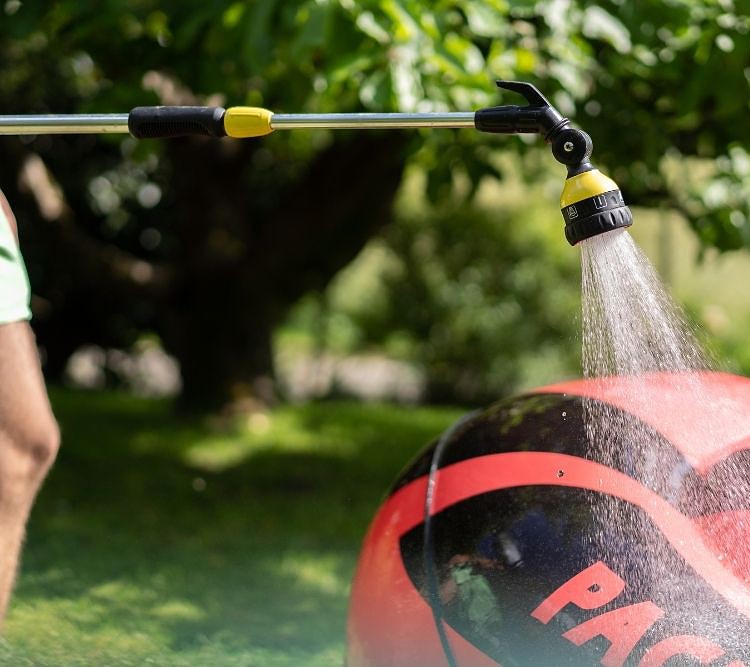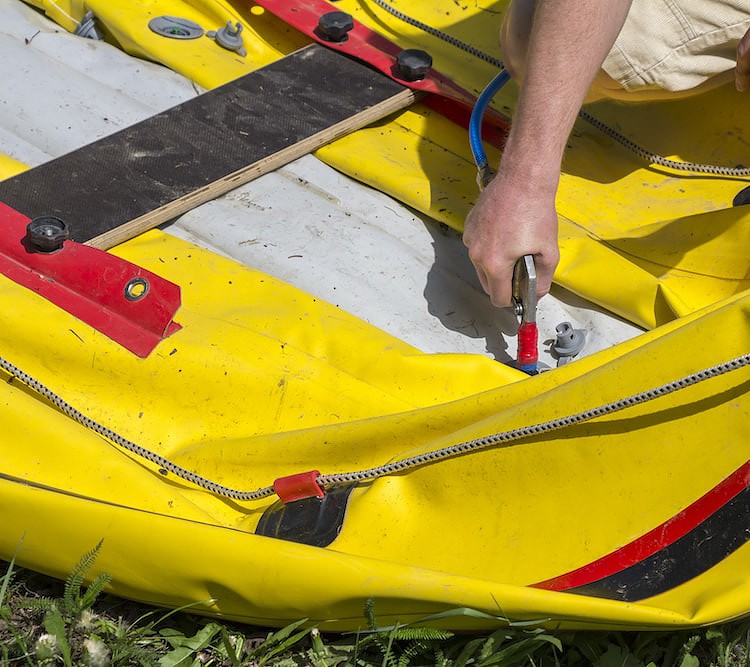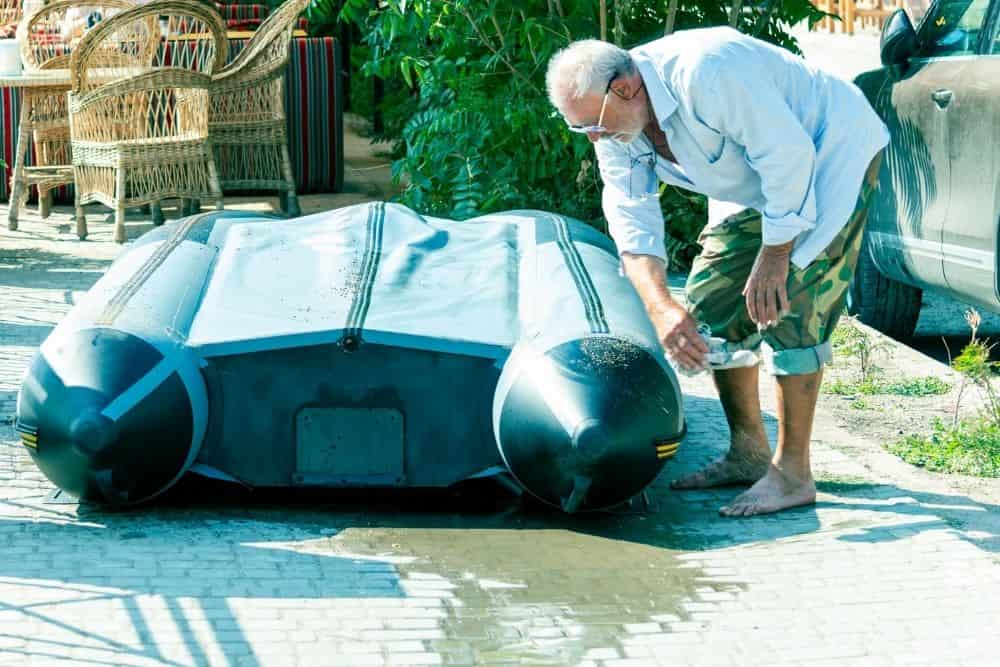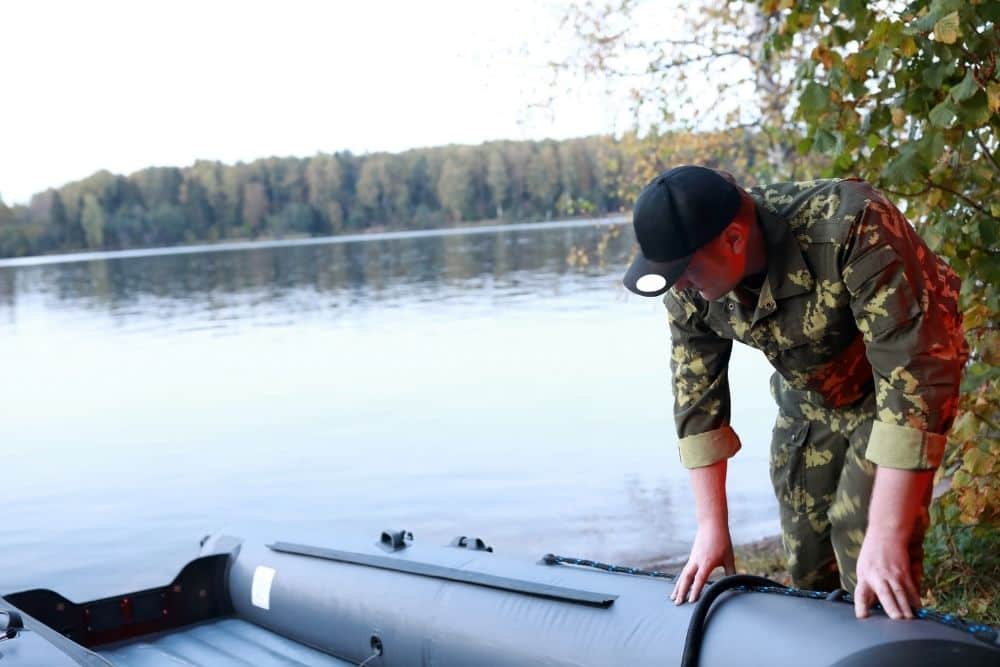Most inflatable boats are made using one of three materials – PVC, polyurethane, or a Neoprene/CSM (Hypalon) mix. While PVC and polyurethane are still in production, Hypalon was discontinued by its manufacturer DuPont in June 2009. We know it can be unnerving to hear that a common material has been discontinued. However, knowing the facts …
Inflatable Boat
Inflatable boats are an excellent option for those who are looking for a lightweight yet reliable option for out on the water. They’re also not as noisy as traditional boats, which is preferable when trying not to spook fish. Despite the many advantages, there’s also one major disadvantage – they are prone to leaks and …
If you’re new to fishing a particular body of water, having a fish finder will make your job a lot easier. Fish finders are excellent tools for scouting out the water and picking out areas where the fish tend to congregate. But what if your fishing boat of choice is an inflatable? Is it possible …
Are you wondering how to get the registration numbers or letters on your inflatable boat? It might be harder than you think! Some boaters note that traditional methods of putting numbers on inflatable boats don’t always work on inflatables. Some adhesives don’t stick very well and paint may not withstand repeated inflation and deflation. Here’s …
If you enjoy inflatables but are unsure whether or not you can fish in them, you’ve come to the right place. You will love an inflatable boat’s location flexibility and portability compared to a kayak or traditional boat. A dinghy allows you to maneuver to different locations with ease and not have to worry about …
If you owned your boat for a long time, the adhesive on your boat tends to wear out, leaving you with pieces of stuck glue on your dinghy. The most common area for glue to stick on is the rub rails. Whether you’re removing some handles or just removing a temporary glue patch off your …
Filling an inflatable boat might sound obvious. However, there’s more than meets the eye. You must assemble and fill the boat correctly; otherwise, it could be a safety hazard. We’ll cover: How to fill an inflatable boat quickly and safely Can you fill it with foam? How long does it take to fill an inflatable …
Your inflatable boat is prone to some wear and tear over time. Whether it’s air leaking, dirt stains, scuff marks, oxidation, or any other type of damages, there’s a way you can restore your inflatable boat. A dingy should last you about ten years. However, without proper care and maintenance, its lifespan will be much …
Many rigid inflatable boats come with a transom made of marine plywood or aluminum. You can use this transom for mounting trolling motors or rod holders as well as for strapping gear down. You can also use them to hold onto while your boat is speeding through the water. But what if the transom breaks? …
Inflatable boats are made to be durable, but no product is perfect. Sometimes, these boats may develop air leaks. You may notice that one of the air chambers won’t stay inflated, or you may notice that the boat slowly loses air over the course of a few days. Perhaps you scraped the boat in a …
So you just bought yourself a brand new inflatable boat, and you can’t wait to take it out on the water. The only problem is, you’re not sure how to actually get it into the water. If you’ve never launched an inflatable boat before, you may be worried about how to do it without damaging …
An inflatable boat can deflate over time by the sun’s heat and UV rays on it. The process is quite simple. When we blow up an inflatable through a pump, we fill it up with warm air. The sun causes the air inside to expand, which then leads the vinyl air tubes to become stiff. …
Many people wonder if inflatable boats will last. They may want to make sure they are investing in a boat they’ll be able to use for many years, or they may just be interested in learning more about watercraft. No matter the reason for your curiosity, here’s what you need to know about how long …
Many people who fish like to anchor their boats in one place so they can hover over the fish and get a big catch. Even if you don’t fish, you might want to anchor an inflatable boat for many reasons. Or, you may just be interested in how inflatable boats work. No matter your reason …
Are you wondering how to deflate an inflatable boat? Maybe you’re trying to store one for winter or you’re considering buying one but you want to know everything about them before you do. Your reason for wanting to understand how to deflate and fold an inflatable boat doesn’t matter. Here’s everything you need to know …
Are you wondering about the safety level of inflatable boats? Do you suspect that they are not as safe as regular boats or that they might pop and lose air? While it makes sense that people are concerned about inflatable boats and safety, especially if they have not used them, before, many of these concerns …
Many people wonder if inflatable boats are worth purchasing. After all, they seem like they could pop easily. However, inflatable boats are perfect for many people. Here’s what you need to know to decide if an inflatable boat might be a good option for you. Whether you’re buying a boat soon or you are just …
Are you wondering how to get back into an inflatable boat? Getting into an inflatable boat or raft can be difficult unless you know what you’re doing. Fortunately, there are a lot of easy ways to get back into a boat. Here’s everything you need to know about how to get back into your inflatable …
Are you interested in whether a person can stand up in an inflatable boat? The answer may be more complex than you had anticipated. While it is entirely possible to stand up in an inflatable boat, it depends on the type of boat and the type of bottom you choose. Some inflatable boats do not …
Are you wondering how to protect the bottom of an inflatable boat? After all, if the boat gets damaged, it can’t be used and that can create a huge hassle. Whether you own an inflatable boat that you want to protect or you’re wondering what it would take to protect one, know that the project …





